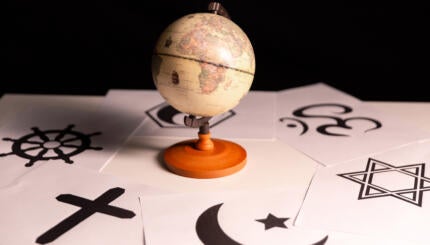Like it or not, intermarriage is a fact in Jewish life.
And for the most part the Jewish community has learned to live with it. Sure, different movements deal with it differently. Sure, some congregations are more adept and accommodating. But from Renewal to Orthodox we no longer assume that a Jew by birth will marry another Jew by birth.
But as demographics shift in the United States, the nature of intermarriage is changing too. And the Jewish community will need to adapt if it hopes to continue to create spaces for these new Jewish families.
In particular, my concern is with multiracial and multicultural families. There is nothing new about Jews from all racial and ethnic backgrounds. There were Jews in Ethiopia centuries before there were Jews in Poland and Jews in India before there were Jews in Spain. Jewish institutional life in the United States, however, has largely been built on the presumption that Jews are white. And our welcome to interfaith couples has similarly assumed that intermarriages between one white Jew and one white non-Jew.
But interracial marriages are at an all time high in the Unites States, a trend that is expected to continue as the population becomes increasingly more diverse. And Jewish households are clearly part of this trend.
We will need to change our language and approach in order to live up to the welcoming image we have of ourselves. Having become accustomed to Jews who have blond hair and blue eyes or wear “Kiss Me I’m Irish” t-shirts, we need to be open to those with dreadlocks or who celebrate Cinco de Mayo. Because these new members of our extended community come from many different backgrounds, we cannot make assumptions about how they understand religion, community, or family. We will have to personalize our approach. We need to meet others who see Jews not just as a religious minority but as part of the white establishment. We need to broaden our own learning, so that we understand and appreciate the cultural challenges and gifts that they bring.
In the last year I’ve attended several b’nai mitzvah ceremonies that exemplify the power of embracing multiracial, multicultural Jewish families. At one service, the boy chanted from the Torah while wearing a Korean hanbok. Blessings were said in English and Korean as well as the traditional Hebrew. At another the bar mitzvah spoke of being half Japanese, half Australian and fully Jewish in a synagogue decorated with origami chains for the occasion. At another, the bat mitzvah took the occasion to also take on a traditional Japanese name sharing her multiple new identities with the congregation. In each case conversations had to be had about how to bring together multiple elements of identity into what is so clearly a Jewish setting. In each case, thought and respect were evident throughout.
These are the success stories, families who feel fully welcome, fully empowered. They are passing on Jewish traditions even as they expand them. They shine of an example of that to which we can all aspire.
bar mitzvah
Pronounced: bar MITZ-vuh, also bar meetz-VAH, Origin: Hebrew, Jewish rite of passage for a 13-year-old boy.
bat mitzvah
Pronounced: baht MITZ-vuh, also bahs MITZ-vuh and baht meetz-VAH, Origin: Hebrew, Jewish rite of passage for a girl, observed at age 12 or 13.
mitzvah
Pronounced: MITZ-vuh or meetz-VAH, Origin: Hebrew, commandment, also used to mean good deed.
Torah
Pronunced: TORE-uh, Origin: Hebrew, the Five Books of Moses.



